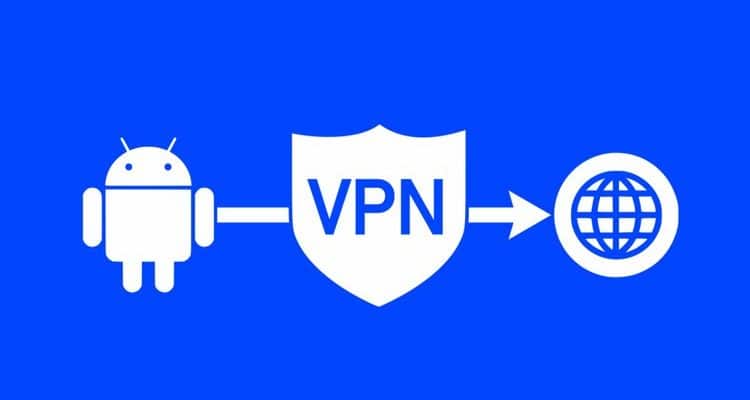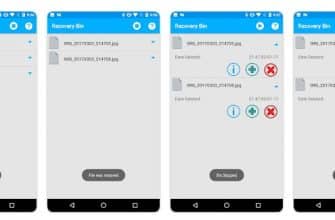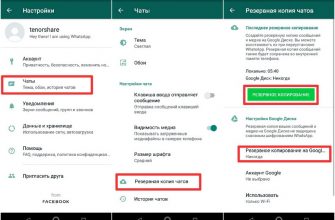What you need to know about VPN on Android: how to choose a VPN for android in 2023, how to connect, install, configure or disable, and what to do if it doesn’t connect or other problems arise. Recently, due to numerous sanctions and bans, some Internet resources have become inaccessible to many, ranging from social networks to scientific sites in physics. And more and more people want to remain anonymous online. A VPN can easily help with this. What is it and how to install it on Android. Let’s take everything in order.
- What is a VPN and why is it needed, how to use it on android smartphones
- How to install VPN on Android and set it up – step by step instructions with photos
- How to enable VPN on your smartphone
- How to disable vpn on android
- VPN problems and solutions
- Internet connection
- Server change
- Protocol change
- Service blocking
- Best Ad-Free VPNs for 2023
- Best Free VPNs for Android
- How to find the built-in VPN on Android
- How to connect vpn on android without app
- Where to see the address of the VPN service on the phone
- how to set up vpn in android settings
- How to set up automatic connection
- How to Set Up a VPN for Individual Apps on Android
What is a VPN and why is it needed, how to use it on android smartphones
The abbreviation VPN (VPN) stands for virtual private network in English “Virtual Private Network”. The essence of the work is the creation of an anonymous and secure connection between different devices on the Internet, that is, the creation of a second, “additional”, personal network. This is possible by encrypting the data and in particular the personal IP address, the digital identifier of every device on the Internet. Thus, no one can track exactly where your device is and will not be able to get any data about it. This forms the basic principles of working with VPN – anonymity, security and privacy. VPN protects the device from intrusions from outside and does not allow other users to find out information about you – neither passport data, nor credit card number. Now such services have become especially relevant and they have become much more frequently used. All because of the restrictions that prevent access to some sites. This is tracked automatically and it will be possible to bypass the system just with a private network. The address of the smartphone will be changed to a foreign one, and the site will think that you are, for example, from Sweden. It remains only to understand how to properly connect a VPN and choose the right service.
How to install VPN on Android and set it up – step by step instructions with photos
The basis for installing a VPN on an Android phone is to download the application. There are many free and paid services on the Internet, which we will talk about a little later. So, here is the algorithm for installing and configuring VPN on Android:
- Download the application from the Play Market.
- When you first start you will be prompted to accept the application policy and terms of service – click “Accept and continue”.

- After that, if you wish, you can change the server to the one that suits you – but most applications automatically offer the fastest option.
 Ready! Because of this, such network protection applications are so popular that even a child can handle them.
Ready! Because of this, such network protection applications are so popular that even a child can handle them.
How to enable VPN on your smartphone
Applications are designed so that the connection button is always on the main page and is even intuitive. After pressing it, the phone system will send a connection request – click “Yes” or “OK”. Your connection is secure!
Your connection is secure!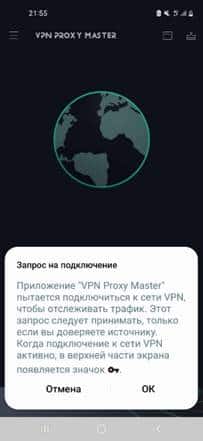
How to disable vpn on android
This shouldn’t be a problem either. Click on the “Disable” button on the main screen of the application and confirm the action. This may take a few seconds, no more. Show some patience.
This may take a few seconds, no more. Show some patience.
VPN problems and solutions
A common situation is that the VPN application has stopped working. Either loads endlessly, or reports an error, or simply does not find the server. There are several ways to solve the problem – if one does not work, try the next one.
Internet connection
First, check if your connection is stable in general. Go to the search engine and try to load any page. If everything works, read on. If the problem persists and only endless loading occurs, try changing the network source (from Wi-fi to mobile Internet and vice versa) and contact the technical support of your operator.
Server change
If it doesn’t help, try changing the server. Due to the large influx of users, they are sometimes overloaded, and the VPN application simply cannot process new requests. All applications have lists of servers – choose one from the end of the list, the number of users on it will be minimal. Usually after that the problem is solved. If not, we move on.
All applications have lists of servers – choose one from the end of the list, the number of users on it will be minimal. Usually after that the problem is solved. If not, we move on.
Protocol change
The next solution to the problem is to change the protocol. This is not available in all applications, but often helps.
This is not available in all applications, but often helps. In the “Settings” find the “Protocols” plate and select a different one from the one used before.
In the “Settings” find the “Protocols” plate and select a different one from the one used before.
Service blocking
If none of the above helped, unfortunately, you will have to download a new application. VPN services are often blocked for a number of different reasons (or stop working in a certain region), which is difficult to track down and prevent. Try to go to the company’s website – most likely, information about the blocking should be indicated there. The user cannot solve such a problem – but there are a huge number of such applications and you can always find a suitable replacement.
Best Ad-Free VPNs for 2023
It is important to remember that most VPNs without ads are paid. However, many have a long trial period during which you can use the application for free. And there is nothing wrong with paid VPNs – they are more convenient and always safe. But there are exceptions in the form of free! List of convenient and working services for 2023:
- VPN+ . High-quality, convenient and inexpensive service. A big plus is the automatic change of the IP address every 5-10 minutes, which makes the connection much more secure. Yes, and a subscription for 2 years costs only 990 rubles (there are options for a month).
- Private Internet Access . Pros: fast connection and the ability to select a server. It is even possible to pay via a Qiwi wallet, although the application is mostly made for America.
- PrivateVPN . The application gets into the list of the best for its stable connection and constant updates to improve the quality. Can be used on 5 different devices.
- Octoide VPN . One of those few free apps with absolutely no ads. Users note the user-friendly interface and fast connection speed.
Attention! It is strongly not recommended to use hacked versions of paid applications. This can lead to serious malfunction of the device, or leakage of personal data!
Best Free VPNs for Android
If you don’t want to buy a paid subscription, it’s not a problem. Below is a selection of good VPN services that work for free on Android devices. The only downside is that you can’t avoid ads. But developers need to make money somehow. The list included:
- VPN Proxy Speed . Convenient interface, understandable even to “dummies” and the ability to select a server.
- VPN Proxy Master . Large buttons and setting connection protection only on specific sites and applications. Minimum advertising.
- planet VPN . Completes the collection, but is one of the best to date. There are no traffic restrictions and intrusive ads, and the connection is no worse than that of expensive, paid applications.
How to find the built-in VPN on Android
You may not need to download any application. Some phone models already have a built-in VPN, which is easy to connect.
Important – most models do not have such a function. However, it’s still worth checking.
To get started, go to “Settings” and select the “Connections” tab (underneath it is often written Airplane mode and Bluetooth). Select “Other settings” and then “VPN”.
Select “Other settings” and then “VPN”. If your device does not have built-in servers, then nothing will be inside the last dice. You will either have to download the application, or set up built-in protection, which will be discussed later. If it does, just click the “Connect” button.
If your device does not have built-in servers, then nothing will be inside the last dice. You will either have to download the application, or set up built-in protection, which will be discussed later. If it does, just click the “Connect” button.
How to connect vpn on android without app
But there is an option to connect without applications. Such a VPN is quite convenient to enable and use in the future. The main thing is just to set it up correctly. So:
- Go to settings and select “Connections” (Wi-fi, Bluetooth, Airplane mode)
- Select “Other Settings”
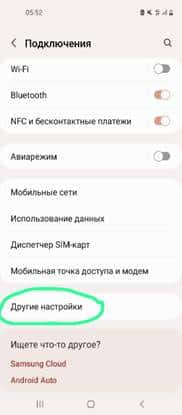
- Then click on the “VPN” box that appears.

- Click on the three dots in the upper right corner and select “Add VPN profile” (or other options depending on the phone model, only one pops out)
- Fill in the details carefully here. In the columns “Name”, “Username” and “Password” enter vpn (in Latin and small letters).
- Type – l2TP/IPSEC.
- In the server address column, you need to enter the address of any VPN that is supported by the l2TP / IPSEC system. Let’s talk about how to find them.
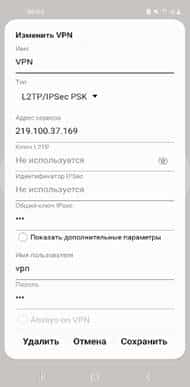
- Then save the entered data and connect to the network. Ready!
 If the connection is successful, the phone will display that the device is connected to the VPN network.
If the connection is successful, the phone will display that the device is connected to the VPN network.
Where to see the address of the VPN service on the phone
To set up a built-in VPN, you need the address of the service. There are several options for how this can be done. First, contact your network administrator. They will provide you with a VPN address that the company recommends using and even tell you how to connect it … but all this will take a lot of time and is rather dreary. It is much easier to use special sites where server addresses are collected.
Important! Pay attention to what type of network you have. This is easy to check when connecting in the “Network type” column. If the most common is I2TP/IPSEC, check that the server supports it. Otherwise, nothing will work. If another, for example, PPTP, the recommendations are the same.
Below are lists of running servers for l2TP/IPSEC.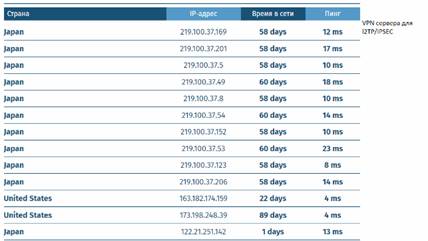
how to set up vpn in android settings
To configure VPN in the phone system, you need to partially repeat the same algorithm as before. Go to “Connections” – “Other settings” – “VPN” in the settings. After that, you will see a list of all servers available to you at the moment. If you want to customize a specific application, click on the settings icon next to the application name. You can configure the following features on your phone system:
You can configure the following features on your phone system:
- Permanent work of VPN.
- Blocking connections without VPN.
- Deleting a server profile.

Some of the features may not be available for a particular application.
How to set up automatic connection
If you do not want to set up and connect VPN services every time, including your phone, use automatic connection. So your connection will always be secure. The only problem is that not all applications support this feature. Paid – yes. But with free ones, automatic connection may not work. Therefore, before trying to configure it, be sure to check this feature in the settings of the application itself. Let’s look at the example of the popular free Psiphon Pro service (the algorithm of actions in other applications may differ slightly, but in general it repeats this one):
- Log in to the app and select “Settings”.
- Select “VPN Settings”.

- Click on VPN Always On. The application will automatically open the settings, where you need to specify that the application should be used all the time.
 That’s all!
That’s all!
How to Set Up a VPN for Individual Apps on Android
Sometimes this option is very necessary – for example, if you often use an application that is currently blocked. After setting up, when you enter it, the VPN service will automatically turn on. The algorithm is quite simple:
- Go to the service settings and select “VPN Settings”.

- Click on the “For selected applications” box.

- Then a little lower, on the “Select applications” – a list of all applications installed on your phone will appear on the screen. You just need to choose one or more.

- Click on VPN Always On. And then, as in the previous paragraph about automatic connection, by going to the settings, allow the service to work all the time (sometimes this feature is called Always-on).
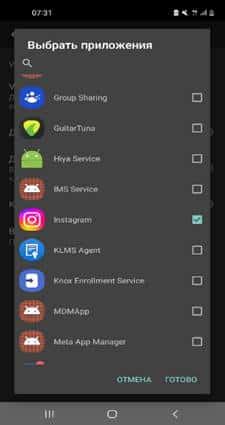 In this case, VPN will protect the network when a certain application is running, and not all the time. Perhaps, that’s all you need to know about setting up and operating VPN. The main thing is to be careful and use only trusted and safe Internet servers. Read app reviews and pay attention to the rating when downloading. Then being online will be safe!
In this case, VPN will protect the network when a certain application is running, and not all the time. Perhaps, that’s all you need to know about setting up and operating VPN. The main thing is to be careful and use only trusted and safe Internet servers. Read app reviews and pay attention to the rating when downloading. Then being online will be safe!
